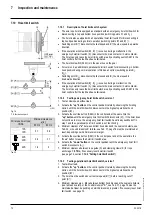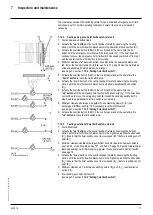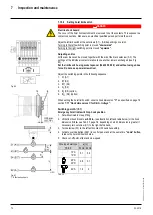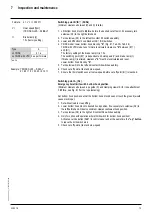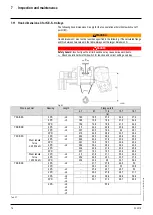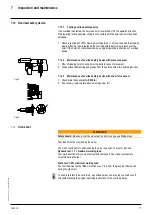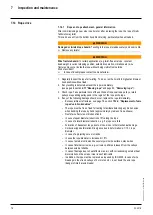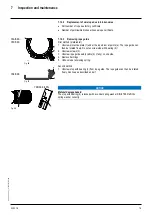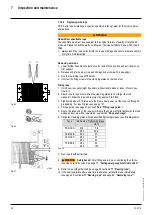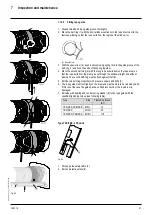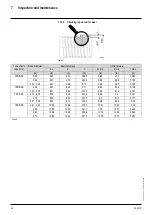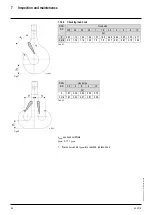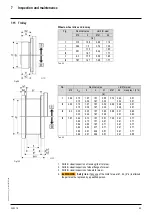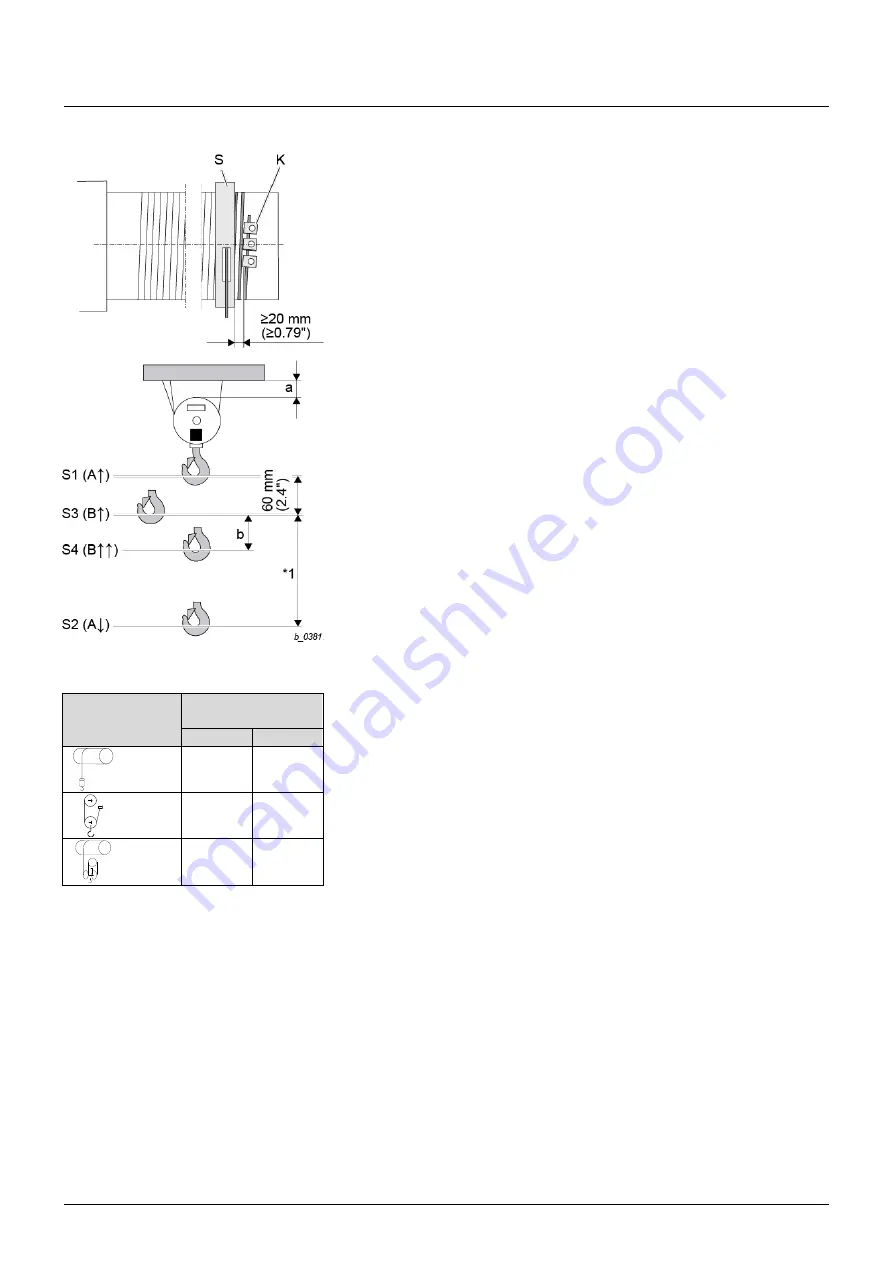
7
Inspection and maintenance
70
03.2018
ba
-o
.2
.6
.0
-us
-1.
1-
y
|
A
11
86
75
01
R
ev
A
A
7.10
Hoist limit switch
Fig. 78
*1 Effective hook path
Wire rope hoist type
YK/SK
Minimum clearance
a [in]
50 Hz
60 Hz
1PS
1PD
5.1
5.9
2PS
2PD
2.8
3.1
4PS
1.6
2
Tab. 34
7.10.1
Description of hoist limit switch system
•
The wire rope hoist is equipped as standard with an emergency hoist limit switch for
disconnecting in top and bottom hook position (switching points A↑ and A↓).
•
The hoist is also equipped with an operational hoist limit switch for disconnecting in
top hook position during normal operation (switching points B↑ and B↑↑).
•
Switching point B↑↑ disconnects the fast speed and B↑ the slow speed in upwards
direction.
•
If the operational limit switch (B↑, B↑↑) is overrun during a malfunction, the
emergency hoist limit switch (A↑) disconnects the main contactor / hoist contactor.
The hoist can only leave the hoist limit switch area by activating switch S261 in the
hoist control after the fault has been eliminated.
•
The hoist limit switch (S220) is in the panel box on the gear.
•
For version 2, an additional operational hoist limit switch for disconnecting in bottom
hook position during normal operation is fitted as an option (switching points B↓,
B↓↓)
.
•
Switching point B↓↓ disconnects the fast speed and B↓ the slow speed in
downwards direction.
•
If the operational limit switch (B↓, B↓↓) is overrun during a ma
lfunction, the
emergency hoist limit switch (A↓) disconnects the main contactor / hoist contactor.
The hoist can only leave the hoist limit switch area by activating switch S261 in the
hoist control after the fault has been eliminated.
7.10.2
Testing emergency hoist limit switch, version 1
1.
Test at slow speed without load.
2.
Activate the
“up”
button
on the control pendant carefully, observing the hoisting
motion, until the hoist limit switch disconnects in the highest operational hook
position
(B↑).
3.
Activate the override button (S260) in the control and at the same time the
“up”
button
until the emergency hoist limit switch disconnects (A↑). If the hoist does
not continue to move, the emergency hoist limit switch has already switched off in
step 1 and the operational hoist limit switch is not functioning.
4.
Minimum clearance
“a”
between bottom hook block and the nearest obstacle, see
Tab. 34, or hook dimension
C -2.4 in
, see Tab. 37, page 76 must be maintained at
least, depending on which dimension is larger.
5.
Activate the override button (S261) in the control panel and at the same time the
"down" button to leave the hoist limit switch area.
6.
Activate the
“down”
button
on the control pendant until the emergency hoist limit
switch disconnects (A↓).
7.
Minimum clearance between rope guide (S) and clamping claws (K) for rope
anchorage
= 0.79 in
, if necessary reset hoist limit switch
(see page 72, section
7.10.6
“Setting hoist limit switch”
).
7.10.3
Testing operational hoist limit switch, version 1
1.
Test without load.
2.
Activate the
“up”
button
on the control pendant carefully, observing the hoisting
motion, until the hoist limit switch disconnects in the highest operational hook
position
(B↑).
3.
The hoist must be switched over to slow speed (B↑↑
) before reaching cut-off
point
(B↑).
4.
Minimum clearance
a
+
2.4
in
between bottom hook block and the nearest obstacle,
(see table above left), or the hook dimension
“C”
, see Tab. 37, page 76 must be
maintained at least, depending on which dimension is greater. If necessary reset hoist
limit switch, see page 72.















